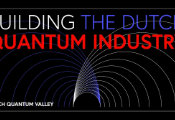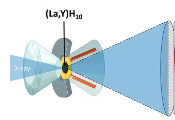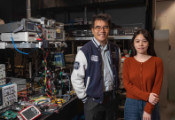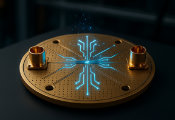Terra Quantum: Researchers Demonstrate New Type of Superconductivity with Novel Type III Materials
ST. GALLEN, Switzerland, Oct. 10, 2024 — Terra Quantum, a global leader in quantum technology, today announced the successful demonstration of a new type of superconductivity – a significant breakthrough in physics and superconducting technology. “Type III” superconductors feature superconducting islands separated by non-superconducting regions, resulting in unique magnetic and electrical properties.
The research, “Topological gauge theory of vortices in type-III superconductors,” was published in Physical Review B, and presents a novel theory describing the new class of superconductors. The paper was co-authored by Terra Quantum’s Chief Scientific Officer Valerii Vinokur, Cristina Diamantini at the University of Peruglia, Italy, and Carlo Trugenberger at SwissScientific.
Originally discovered in 1911, superconductors are materials that can conduct electricity without resistance under certain conditions. In 1986, Nobel-Prize-winning research demonstrated high-temperature superconductivity. Superconductors are currently used in technologies such as MRI machines and will have future applications in quantum computing.
Superconductivity has been traditionally classified as type I and type II. Type I superconductors expel magnetic fields until, at a certain level of intensity of the magnetic field, superconductivity is destroyed. Type II superconductors allow magnetic fields to penetrate in some interval of magnetic fields (until superconductivity gets destroyed by high magnetic fields) in the form of so-called Abrikosov vortices containing normal cores. This implies that the motion of vortices causes finite resistance, so the practical use of type II superconductors requires the creation of special pinning mechanisms preventing vortex motion.
Research published earlier this year and this latest paper by Vinokur discovers a new kind of superconductivity, type III superconductivity, and explains its mechanism and structure. One of the novel properties of type III superconductivity is that at high magnetic fields exceeding the so-called “upper critical field,” the type III superconductivity gets destroyed by proliferation of vortices but not by breaking the superconducting Cooper pairs.
“The unique vortex behavior and ability to realize the superconductivity in any dimension in type III materials results in significant implications for the practical use of superconductivity,” said Vinokur. “It’s an honor to see how our research promises to advance the entire field of superconducting technology, which can now make a huge step forward.”
There are some new phenomena, including the creation of the electric Coulomb fields by moving novel vortices, which require careful further investigation. Terra Quantum’s superconductivity research program will pursue this research aimed at further revolutionary advances in superconducting technology.
“This work builds upon our own research as well as the work from some of greatest minds of the past century,” said Markus Pflitsch, CEO of Terra Quantum. “As we develop useful applications for quantum computing, we’re excited to see how our work in superconducting technology will improve quantum technologies and the electronics industry altogether.”
An absence of the normal cores in novel kind of vortices in type III superconductors open an opportunity to move without energy dissipation. In usual superconductors, the motion of vortices with normal cores results in energy losses, which implies the need to introduce special vortex pinning mechanisms to ensure the practical use of superconductivity. Type III superconductivity provides dissipationless behavior upon the applied currents and electromagnetic fields, opening fantastic opportunities for the practical use of type III superconductivity for superconducting devices.




































